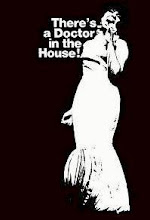In a June 1972 interview originally published in Living Blues # 17 (1974) and re-issued in The Voice of the Blues (eds. Jim O'Neal & Amy Van Singel, London-New York 2002, pp. 375-87), Esther had the following to say about how she came to Kudu:
I felt I had to get with a smaller company where they had time to concentrate on me. Fortunately, this is what's happening with CTI.In the September 1972 issue of Ebony magazine, her first Kudu LP got an enthusiastic review. After mentioning Esther's heroin addiction (»everything but heaven itself had conspired to do her in«), the critic praises her power of will and sees her as »the logical successor to the great Dinah Washington.« (Others, however, have stressed Esther's closeness in art & life to Billie Holiday which, to my mind, is a more fitting comparison.) He then goes on to review some of the main tracks of the LP (several of which were released on Kudu 45's and reached the Top 40 of the r&b charts in '72). The album's closing track, the 6½-minute monster blues »Scarred Knees«, is described as an »improvisatory "Umph-umph-umph" thing« ... well, if this was to mean that Esther hhmmms, squeaks and even hiccups (listen at 01:33!!) herself through part of the song, he's right. This is the song, the bluesiest tune on the album (never released as a 45) and the one which has Esther experimenting most with her voice; she really draws you in:
So this company that I record for now, which is Creed Taylor, Incorporated, CTI Records, Kudu, they have a jazz label with Stanley Turrentine, Freddie Hubbard - so they were looking for me out in California and, at this time, I was without a record company again. And we got together, they wanted one album, so I recorded From A Whisper To A Scream and it worked out very well. ... So far, other than Atlantic, who did promotion, this com- pany really gives you a lot of promotion, which I can really appreciate. They're doing a fantastic job. I'm very pleased with them at this point. (p. 382 f.)
Esther Phillips: »Scarrred Knees« from the Kudu LP # KU-05 (1972):
* * *
P.S. Did I mention that Esther Phillip's string of Kudu records started at the same time (in January 1972) as the Westbound / ABC record series of Denise LaSalle?

















Most interesting . . . never heard this version before. Ever heard the (I assume) original downhome version by Little Miss Janice, from the late 60s? I used to hear it on Brother Henderson's show on XERB way back in the day.
ReplyDeleteI would like to hear Miss Janice's version, I know the song basically from Esther's version. Have to look around in the blogosphere ...
ReplyDelete